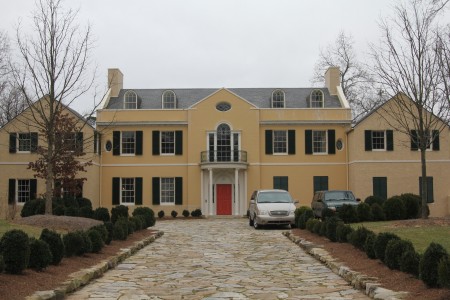The recent demolition of a mansion on Buckhead’s Tuxedo Road drew attention because its architect was Philip Trammell Shutze, the designer of the Atlanta History Center’s Swan House and other prominent local buildings.

Yet, even some outraged preservationists were unaware before the demolition that the house was a Shutze design, because no one has compiled a full list of houses he designed. And unlike in many other cities across the state and nation, Atlanta has no general process for reviewing demolitions of potentially historic homes or offering preservation incentives.
“The crux of the issue is that we do not have a very progressive public policy…There is no planning process that protects a building like that,” said Mark McDonald, president and CEO of the Georgia Trust for Historic Preservation. “It’s a real failure on the part of the Atlanta preservation movement and a failure of the city of Atlanta.”
A city of Atlanta spokesperson said that the Buckhead community had not chosen to use the historic or landmark district designations available under city code. An upcoming rewrite of the city’s zoning code may include more protections, she added.
Born in Columbus, Ga., Shutze became a prominent architect and worked on many houses and institutional buildings in a life that spanned 1890 to 1982, according to the New Georgia Encyclopedia. The most prominent is the 1928 Swan House, where an actor dressed as the architect interacts with History Center visitors.
At least several other Shutze houses still stand in Buckhead, including large mansions on West Paces Ferry Road and the massive Calhoun House on Pinestream Road.

The 1938 home at 3665 Tuxedo—known as the Maddox House—was demolished in early February by Dallas Clement, its new owner. Clement did not respond to a phone call, but McDonald said he talked extensively with the Georgia Trust and even visited another Shutze home—the Patterson-Carr House on Northside Drive—to consider preservation before going ahead with the demolition.
“It’s a very disappointing loss for our community because it was a Shutze work, and Shutze was one of the primary form-givers to the cultural landscape here in Buckhead,” said Erica Danylchak, executive director of the Buckhead Heritage Society.
Yet, she said she was unaware of the house until the demolition controversy.
Michael Rose, executive vice president at the History Center, said Shutze is important because he brought a European style to “Anglophile” Atlanta architecture, often in grand houses that made a statement about their owners’ achievements. Shutze also was known for his “incredible attention to detail” that united both exterior and interior design, Rose said.
“Any loss diminishes the whole,” Rose said of the loss of the Maddox House. But, he added, “I was not that familiar with this particular house.”
William Mitchell Jr., chairman and president of the Southern Architecture Foundation, said he knew Shutze personally and said there’s a reason for the lack of a list of Shutze houses. Shutze did a lot of work with a firm headed by another renowned Atlanta architect, J. Neel Reid. Untangling their teamwork can be difficult, he said.
“He did think that if he had anything to do with a project, he was the designer. But those firms—everybody contributed, really,” Mitchell said. If someone did compile a Shutze house inventory, “It’d be a long list,” he said.
McDonald said Clement deserves credit for talking extensively with preservationists. But in Atlanta, there were few incentives to offer Clement beyond advice on federal and state tax credits. A zoning provision to allow a bigger infill house in exchange for preserving part of a historic structure would be one good reform, McDonald said.
The city will take a look at those sorts of programs in the zoning code rewrite, according to a written statement from the city’s press office.
“We will consider potential incentives such as historic rehabilitation credits and programs in the zoning rewrite,” the statement said.
Atlanta currently has the power to designate historic districts with tight redevelopment restrictions, but residents of Peachtree Heights West batted that idea down a few years ago, Danylchak said. She said that she’s unaware of any other Shutze houses that are threatened, but that the infill trend is endangering many historic homes.
“We’re going to turn around in 20 years and go, ‘What happened to our really grand neighborhoods?’” she said.

Schutze also designed the Fischer Mansion on Chamblee-Dunwoody Road. This 1930 architectural jewel is designated as a member of the National Register of Historic Places. It also needs extra protection from developers. Every community deserves three things: A past, a present, and a future. Diminish any one, and all three suffer.–Tom Reilly